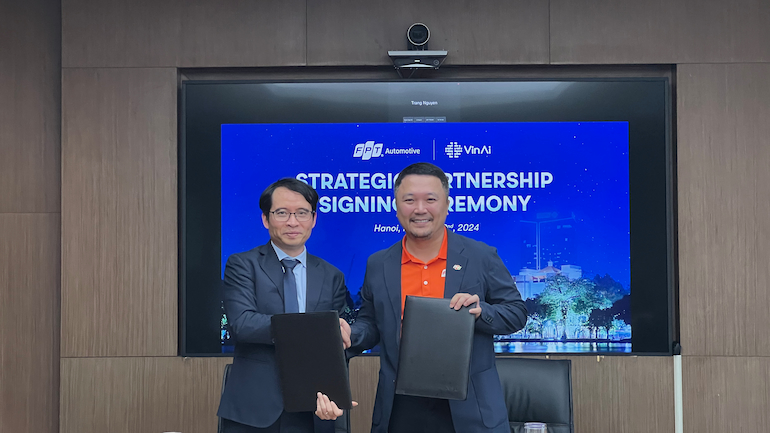Do you know that the automotive industry is undergoing the most significant changes since Henry Ford industrialized automotive manufacturing in 1908? All these changes open up new growth opportunities and bring up big challenges concurrently, requiring YOU – companies in the automotive sector to acknowledge and manage them. Let’s take a look at the key challenges that Japanese automotive industry has to face in 2019.
- Consumer behaviour continues to change drastically
According to Japan Times, the young generation in Japan, especially those living in the city, prefer to utilize public transport, giving up on car ownership altogether. Young Japanese are not as keen on automobiles as their elders were while the older generation – car enthusiasts – are rapidly aging. Young Japanese no longer view cars as status symbols but find car ownership an “economic liability“. Owning and operating a car involves numerous expenses, including compulsory inspections (shaken) every two to three years, yearly automobile taxes, mandatory and optional insurance, high parking fees, toll expressways and gasoline cost (Source: Japan Automobile Federation). This explains why more young Japanese are shifting their life styles from owning cars to sharing cars – which is more cost efficient. As a result, they have the tendency of falling out of love with cars due to changes in individuals’ values on cars and financial circumstances.

This constitutes a structural obstacle to the business, leading to a decrease in car consumption domestically. The peak of automobiles sales was 7.8 million units in 1990 during the “bubble” economy, which has dropped to almost 70% of its peak now. There is little hope for major growth. The sales of automobiles will continue to decrease as the consumption tax keeps increasing.
- Digital demands to increase
Just as phones got smart, so will cars. As digital is increasingly applied to the driving experience, cars now are equipped with safety applications, traffic information services, driver assistance and a vast of infotainment features. All these new technical features aim to deliver safety, comfort, connectivity and ultimately, autonomous driving in the future. Worldwide sales of connected vehicles are expected to grow to slightly more than 77 million units annually by 2022, rising at a compound annual growth rate (CAGR) of 19% from about 19 million in 2014, according to IHS Automotive. In Japan, the connected-car related market is likely to expand to as large as a trillion yen by 2020. The market is projected to grow further by 2025 to almost twice the size of 2020 to 2 trillion yen, due to increasing number of connected cars and to wider acceptance of those services that use probe information or cloud ADAS (Source: Yano Research Institute Ltd.)
At present, only 10 percent of cars on Japan’s roads having embedded connectivity, compared with 49 percent in the U.S., 31 percent in Europe, and 20 percent in China, according to consultancy SBD Automotive. The threat to the Japanese carmakers is that they have to compete with competitors on a global level that have experience and have built the ecosystem and service platform. So far, the local carmakers have failed to come up with services that would draw users, according to Matsubara of IHS Markit. Toyota started its connectivity company in 2016 and aims to have 70 percent of new cars on the system by 2020. Nissan said last month it plans to offer connectivity for all new Nissan, Infiniti and Datsun cars sold in key markets by 2022. Honda hasn’t announced a target, but has said it’s in the progress of developing new connected technologies. The turning point will be around 2020 to 2025,” said Takao Asami, Nissan’s senior vice president in charge of research. “If we miss that period, we will have a big problem.”

To respond to the growing demands on connected cars, Japanese automotive players are required to shift their concentration and pursue open innovations. They could turn these challenges into opportunities, but only if they could figure out how to make money from this desire. OEMs will have to manage shorter product and service development cycles, such as software and other technology updates while Tier 1 suppliers will need to add more values in alternative powertrain technologies and in innovative solutions for active safety and infotainment.
- Labour shortage to go up
Another prominent problem of Japanese automotive industry is going out of skilled and efficient workers. Japan’s population is expected to decline from about 127 million to about 88 million by 2065, according to the National Institute of Population and Social Security. This issue has had huge impacts to every industry, especially Japanese automotive industry. People associated with cars company are near retirement age and automakers couldn’t find their equivalent replacement from young generation. As time passes, this subject becomes a serious concern and major issue for the Japanese automotive industry: replace the ageing engineering sector with young talents and encourage the young generations to pursue their career in the automotive field. That Japanese youngsters stay apathetic and indifferent towards cars or automotive division is definitely not going to be solved straightforwardly.
Gradually, this has caused labour shortage for Japanese automotive players and auto part suppliers, requiring them to change the traditional business management, operation or product strategy. They are facing with the challenges in optimizing efficiency and product quality despite declining employment. Robots and other automation have recently been utilized as resolutions to meet labour shortages.
—
To mitigate challenges and capture future growth, Japanese automotive players cannot simply turn to their traditional toolbox. They need to review and adjust their strategic priorities, deploy the appropriate investments and resources, and establish cooperation with partners from outside the automotive industry. Discover more with FPT in the next newsletter!


































.webp?modified=20240202074007)

.webp?modified=20240423064956)




